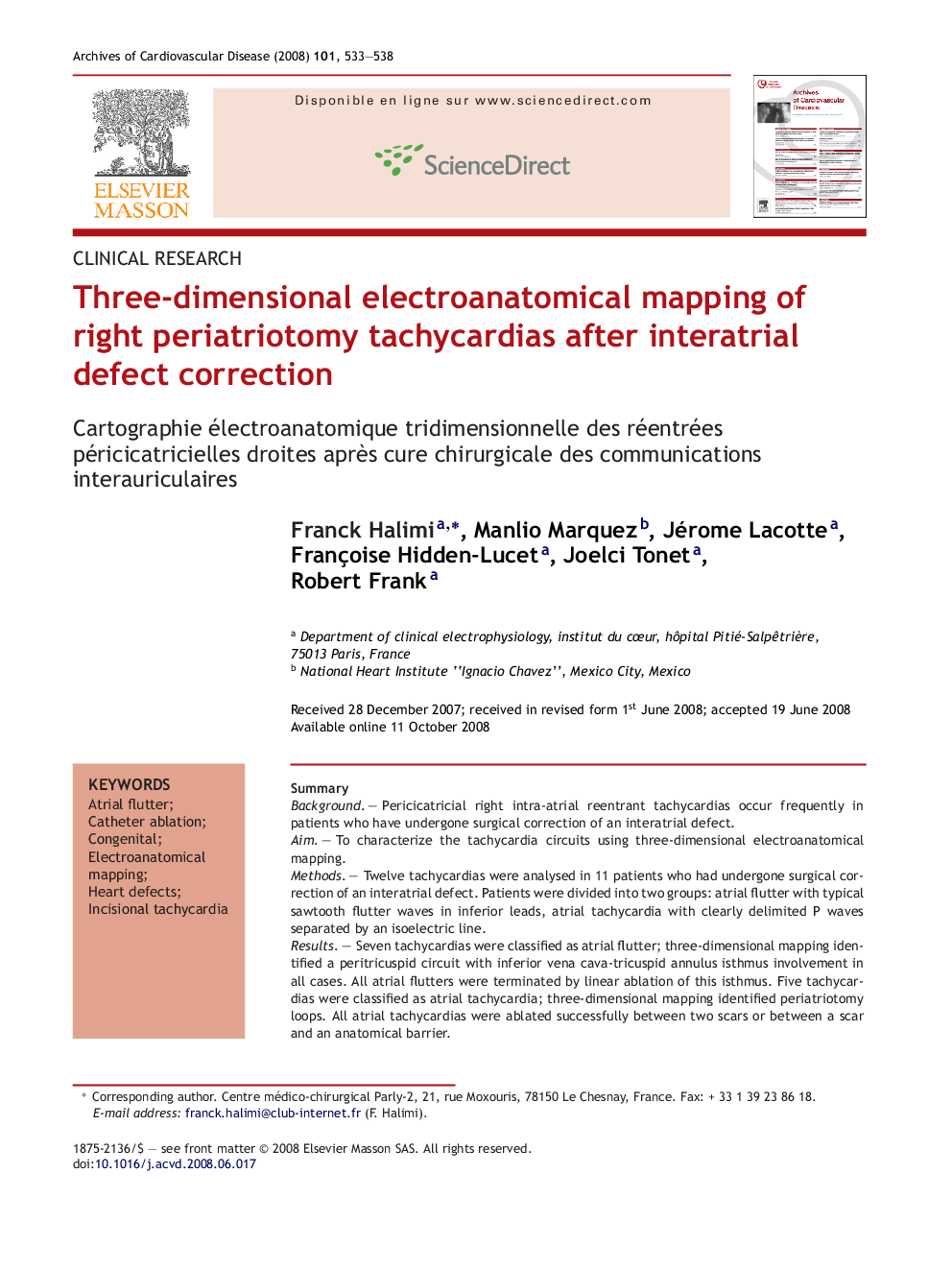| Article ID | Journal | Published Year | Pages | File Type |
|---|---|---|---|---|
| 2889873 | Archives of Cardiovascular Diseases | 2008 | 6 Pages |
SummaryBackgroundPericicatricial right intra-atrial reentrant tachycardias occur frequently in patients who have undergone surgical correction of an interatrial defect.AimTo characterize the tachycardia circuits using three-dimensional electroanatomical mapping.MethodsTwelve tachycardias were analysed in 11 patients who had undergone surgical correction of an interatrial defect. Patients were divided into two groups: atrial flutter with typical sawtooth flutter waves in inferior leads, atrial tachycardia with clearly delimited P waves separated by an isoelectric line.ResultsSeven tachycardias were classified as atrial flutter; three-dimensional mapping identified a peritricuspid circuit with inferior vena cava-tricuspid annulus isthmus involvement in all cases. All atrial flutters were terminated by linear ablation of this isthmus. Five tachycardias were classified as atrial tachycardia; three-dimensional mapping identified periatriotomy loops. All atrial tachycardias were ablated successfully between two scars or between a scar and an anatomical barrier.ConclusionPeriatriotomy loops were always associated with an atrial tachycardia electrocardiogram pattern. Three-dimensional electroanatomical mapping appeared to be particularly useful for circuit identification and for ablation of these complex arrhythmias.
RésuméHistoriqueLes tachycardies par réentrées intra-atriales droites péricicatricielles compliquent fréquemment la chirurgie réparatrice des communications interauriculaires (CIA).But de l’étudeCaractériser les différents circuits d’arythmie par cartographie électroanatomique tridimensionnelle.MéthodesDouze tachycardies ont été analysées chez 11 patients ayant bénéficié d’une cure chirurgicale de CIA. Ces tachycardies ont été séparées en deux groupes : celles ayant une allure flutterienne typique, avec un aspect en dents de scie dans les dérivations inférieures et celles ayant un aspect de tachycardie atriale, avec des ondes P discrètes, séparées par une ligne isoélectrique.RésultatsSept tachycardies ont été qualifiées de flutteriennes ; la cartographie tridimensionnelle identifiant dans tous les cas un circuit péritricuspidien avec passage dans l’isthme cavotricuspide. Le traitement par ablation linéaire par radiofréquence de cet isthme a été efficace. Cinq arythmies ont été classées comme tachycardies atriales ; la cartographie mettant en évidence une macroréentrée autour de la cicatrice d’atriotomie. Ces dernières ont toutes été ablatées avec succès, soit entre deux zones cicatricielles, soit entre une cicatrice et une barrière anatomique.ConclusionLes macroréentrées péricicatricielles droites étaient toutes associées à un électrocardiogramme de tachycardie atriale. La cartographie tridimensionnelle s’est révélée particulièrement utile pour l’identification des circuits et le traitement par radiofréquence de ces arythmies complexes.
